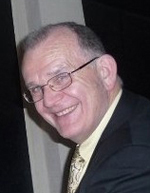The Shining, Stanley Kubrick, 1980
Re-released 2012 & Re-assessed.

For the last eight years I have been introducing, at the Queen’s Film Theatre Belfast, a selection of classic films from the vaults of world cinema.
Most recently (December 14) the spotlight fell on the re-release of Stanley Kubrick’s third last film The Shining.
In 1980 neither Full Metal Jacket nor Eyes Wide Shut was yet on the horizon, while Barry Lyndon had been five years on the go.
There has been more non sense spoken and written about The Shining than Citizen Kane and Vertigo put together and that’s saying something.
For example: ‘The first epic horror film!’ screamed critic Jack Kroll in Newsweek (the print edition of which will cease, by the way, at the end of this month).
It’s neither epic nor horror, so let’s get The Shining in to sharper focus.
The Overlook Hotel, where the Torrance family unravels, is as iconic a setting in American cinema as the Bates Motel in Psycho, itself based on the McKittrick Hotel in Vertigo – all palaces of paradox.
Up at the Overlook, the air is crystal thin, a place where shining can last for decades: in the continuous present, in the imperfect past and in the conditional future of its protagonists.
But ironically the Overlook is useless in winter, when snowed in, and it still needs a caretaker, someone to run the boiler, for five months of the year.
So the Overlook becomes Jack Torrance’s obelisk/monolith – adapted and adopted by Kubrick from 2001 – and from that point onwards Stephen King is nowhere to be seen.
This is a rubik cube of a film (Rubik’s Cube was launched coincidentally the same year as The Shining), but if we try and solve the Shining puzzle while we’re watching it we’ll miss the film’s invitation for extreme interpretation and storyteller Kubrick’s metaphysical imposition of the past on the present.
As in Hitchcock or in Welles, all is not what it appears to be and, like them, Kubrick relishes dangling questions, nuanced ambiguities, subtle ellipses.
The Shining is Citizen Kane for adult conspiracy perpetrators; it is Vertigo for male-gaze theorists; it is Touch of Evil for grown-ups who need regular fixes of enigma.
For this is the one, great Kubrick film, inter-dimensional and genre-defying.
His thirteen full length films were very different, each from the other, as in Dr Strangelove, Barry Lyndon, Paths of Glory – films of his which I have already introduced at the QFT in recent years.
All his later films were adapted from pre-existing texts, carefully tailored, immaculately prepared, effortlessly imagined and mise-en-scèned, symmetrically composed – yet, according to his widow Christiane Harlan and their daughter Vivian Kubrick, not one was ever finished to his fullest satisfaction.
As for horror: have you noticed how hollow the frights of modern horror movies have become?
The Shining is not a horror film; there are no gothic shadows or spray-on cobwebs.
This film is phantasmagoria, a malevolent dread film.
Dread rarely has climaxes, just anticlimaxes, and, as The Shining is both agoraphobic and claustrophobic, the dread never goes away.
Does this make make Jack Torrance, and his Faustian pact, a second cousin of the dreaded Hal [2001] or the dreadful Alex [A Clockwork Orange].
Meanwhile, back at the Overlook, little Danny Torrance has nobody to play with, and it’s that vacuum that the ghosts rush in to fill.
Or is it?
Can The Shining be that simplistic, and at the same time be Kubrick’s densest text, of the body of work he took forty-six years to complete?
The look and feel of this film is defined by the ultra-low gyroscopic Steadicam of its inventor Garrett Brown, and with this novelty Kubrick was the first to surpass dolly, crane-mounted and hand-held camera movements and shift the process of film-making to another dimension.
You may remember how breathtaken we were, a couple of years earlier, in the late 70s, when first seeing some of Brown’s Steadicam work in Marathon Man and Rocky?
Kubrick made his last eight films in England, where he had lived –the quiet American – for thirty-seven years until his death in 1999, so all The Shining interiors were constructed and shot in the EMI Elstree Studios, close to his home, Childwickbury Manor, near St Albans.
Until now we have only known the 119 minute cut (unless you’ve seen it in America?).
The 2012 re-release has a further 25 minutes (which, frankly, it doesn’t need), and there are still two minutes missing even from this cut – a redundant coda with Wendy in hospital which Kubrick edited off the end himself.
This re-release has been delayed six weeks here, so let’s hope that does not diminish its slow-burning emptiness, the cabin fever, the Grady girls, the blood and the snow, the hedge-maze, and two fundamentally key scenes: the head chef-and- little boy chat at the kitchen table, and the man-to-man chat in the red men’s room.
But who is the reliable observer in all this?
Whose version of events can we trust?
Is the thing in plain sight the last thing we see –overlooked until then?
And have you remembered that Red Rum won the Grand National three times while Kubrick was working on The Shining?
A few lines from the film should get our intellect and emotions into gear as we settle down to watch (although one of them does not fit – which one?):
‘Is there something bad here?’
‘There ain’t nothin’ in Room 237’
‘Hello, Danny, come and play with us, for ever, and ever’
‘What’ll it be, Mr Torrance? Bourbon-on-the-
rocks?’
‘Daisy, Daisy, get me your answer, do’
‘You’re the caretaker, sir; you’ve always been the caretaker’
Or is ‘July 4th Ball 1921’ the odd one out?
George Fleeton writes independently on arts and culture in Ireland, and abroad, and teaches Cinema and Opera in Higher Education. He has studied Kubrick’s films for many years.


























